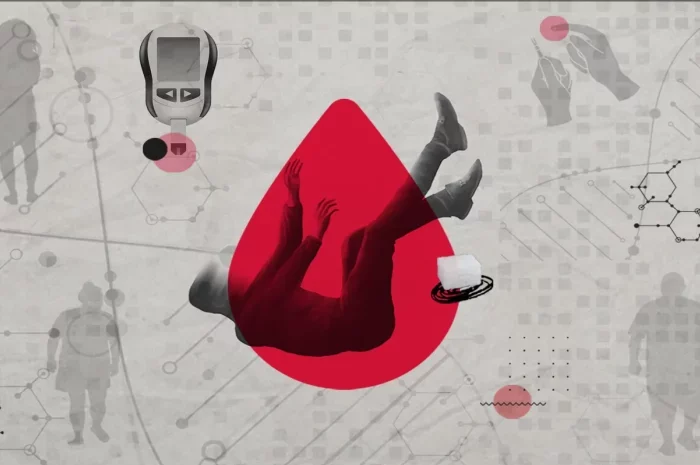Living with diabetes can be a challenging journey, filled with ups and downs as you strive to manage your blood sugar levels and maintain a healthy lifestyle.
But what if you’ve heard about something called dual diabetes and worry it might affect you? Dual diabetes, also known as hybrid diabetes, is a rare condition where someone shows signs of both type 1 and type 2 diabetes at the same time.
If you’re a diabetic who’s concerned about the possibility of dual diabetes, this guide is for you. We’ll delve deeper into what dual diabetes is, how it happens, and what you can do if you’re worried about it.
Understanding Dual Diabetes
First things first, let’s break down what dual diabetes really means. In simple terms, it’s like having a mix of two different types of diabetes – type 1 and type 2 – happening simultaneously in your body.
Type 1 diabetes is an autoimmune condition where your body’s immune system attacks and destroys the insulin-producing cells in your pancreas.
On the other hand, type 2 diabetes typically develops when your body becomes resistant to insulin or doesn’t produce enough insulin to maintain normal blood sugar levels.
Dual diabetes means dealing with aspects of both conditions concurrently, which can complicate treatment and management strategies.
What Causes Dual Diabetes?
You might wonder, “How does dual diabetes happen?” Well, the exact causes aren’t entirely clear, and researchers are still working to understand this complex phenomenon fully.
However, several factors may contribute to the development of dual diabetes. Genetics plays a significant role, as having a family history of diabetes increases your risk of developing the condition.
Additionally, lifestyle factors such as diet, exercise habits, and weight management can influence your likelihood of developing diabetes. Other potential triggers, including environmental factors and underlying health conditions, may also play a role in the onset of dual diabetes.
Recognizing the Signs
It’s crucial to recognize the signs of dual diabetes early on, but they can be subtle and easily overlooked, especially since they overlap with symptoms of both type 1 and type 2 diabetes. Common symptoms of dual diabetes may include:
- Frequent urination
- Excessive thirst
- Unexplained weight loss
- Fatigue or weakness
- Blurred vision
- Slow wound healing
- Recurrent infections
If you experience any of these symptoms, it’s essential to consult your healthcare provider for a thorough evaluation. While these symptoms may not necessarily indicate dual diabetes, they warrant further investigation to ensure timely diagnosis and appropriate management.
Getting Diagnosed
Diagnosing dual diabetes can be challenging, as it requires a comprehensive evaluation of your medical history, symptoms, and laboratory test results. Healthcare providers may perform various tests to assess your blood sugar levels, including:
- Fasting blood sugar test
- Oral glucose tolerance test (OGTT)
- Hemoglobin A1C test
- Insulin and C-peptide tests
- Autoantibody tests
Additionally, your healthcare provider may evaluate other factors such as your family history of diabetes, lifestyle habits, and overall health status. A thorough diagnostic approach is essential to accurately identify dual diabetes and develop an appropriate treatment plan tailored to your individual needs.
Managing Your Concerns
If you’re worried about dual diabetes, there are steps you can take to manage your concerns and stay proactive about your health. Start by staying informed about your diabetes and the potential risks associated with dual diabetes.
Attend regular check-ups with your healthcare provider to monitor your blood sugar levels, assess your overall health, and adjust your treatment plan as needed.
Your healthcare provider can offer guidance on lifestyle modifications, including dietary changes, exercise routines, and stress management techniques, to help you manage your diabetes effectively.
Finding Support
Living with diabetes, whether it’s type 1, type 2, or dual diabetes, can feel overwhelming at times. Remember, you’re not alone on this journey.
Reach out to family, friends, or support groups for encouragement, advice, and emotional support. Connecting with others who understand what you’re going through can provide valuable insights, motivation, and solidarity.
Additionally, consider seeking professional support from a diabetes educator, counselor, or therapist who can offer specialized guidance and assistance tailored to your unique needs.
Conclusion
In conclusion, while the idea of dual diabetes might seem daunting, it’s essential to remember that knowledge is power. By understanding what dual diabetes is, recognizing the signs, and staying proactive about your health, you can take control of your diabetes journey and live well with confidence.
Don’t hesitate to reach out to your healthcare provider if you have any concerns or questions – they’re here to help you every step of the way. Remember, you have the strength, resilience, and resources to navigate the complexities of dual diabetes and thrive despite the challenges it may present.

























